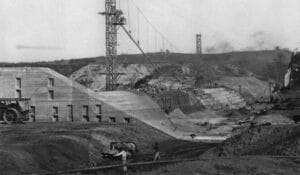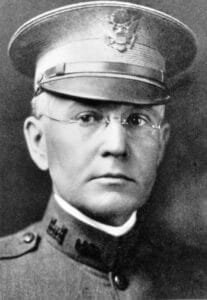The 1910s: Solving Water Supply Crises Here and In France
As we celebrate Freese and Nichols’ 130th anniversary, this series will chronicle company achievements decade by decade. These posts are based on A Century in the Works, written by Deborah Sizemore and covering 1894 to 1994, and Continuing the Journey, covering 1995 to 2015.
During the 1910s, Freese and Nichols founder John Hawley continued to flourish serving municipalities across Texas. Hawley laid the groundwork for White Rock Lake and Lake Worth, which would be used to fill the needs of two budding cities on each side of the Metroplex, helped found a state organization for Texas engineers and solved a water supply crisis in France during World War I for the Allies.
White Rock Lake and Lake Worth
Hawley served on two committees to help meet the water needs of Dallas, which was experiencing a drought, and Fort Worth, which was experiencing rapid growth. Through recommendations from Hawley and the committees, two dams were built on the Elm Fork northwest of town. White Rock Dam was completed and closed off on June 24, 1911. For the City of Fort Worth, the advisory committee recommended building a storage reservoir on the West Fork of the Trinity. Construction started in November 1911, and the dam was completed in 1914. The cost was $1.6 million. Lake Worth first filled on Aug. 19, 1914. At the time, it was the biggest municipal water supply reservoir in Texas and one of the largest in the country. Only some of the big California reservoirs and those supplying New York City, Boston and Denver were larger.
Texas ASCE
John Hawley’s commitment to education and professional development was reflected in his long and active membership in the American Society of Civil Engineers. After he struck up a conversation with another ASCE member, Charles Terrell Bartlett, on a train to Corpus Christi, the two decided to start a Texas section of the group – officially founded July 12, 1913. For Hawley, 1913 was the start of a quarter-century of active and enthusiastic support of the Texas Section. After serving as first vice president through 1914, he was elected president of the section in 1915. He also became a national officer of the parent society that year, serving as ASCE director for the southern region of the U.S. from 1915 through 1917. His duties as a national director compelled him to travel to New York for two days every other month to attend directors’ meetings at ASCE headquarters. Hawley made good use of his travel time by arranging side trips to inspect the notable public works of cities nationwide, from Seneca Falls to San Francisco. After completing his term as national director, Hawley threw himself into committee work for the Texas Section.
The Great War
In May 1917, Hawley was commissioned Major of Engineers, and his contributions during the next 18 months would earn him international recognition for service to the Allies.
In late November 1917, Major Hawley was ordered to France with the American Expeditionary Force in command of the 503d Engineers, Service Battalion. The combined drought of 1917 and the “draught” of the American army sadly depleted the Saint-Nazaire city water storage. Before the war, the city used only about 700,000 gallons daily. Wartime demands increased consumption to an estimated 3 million to 4 million gallons per day.
To augment the Pontchateau storage, Hawley commandeered two small existing lakes above the city. On a creek near the two small lakes, Hawley’s engineers built an earthen dam, with spillway excavated in rock, to catch and store another 200 million gallons. The works built by American engineers left the district well supplied for 1919 despite the previous drought. Official reports described Water Supply Base Section No. 1, headquartered at Saint-Nazaire, as the most difficult engineering problem behind the fighting front in France. From the time of his arrival in France to and after the signing of the armistice on Nov. 11, 1918, Major Hawley directed the design and construction of about 30 projects over the length and breadth of Base Section No. 1.
Upon Major Hawley’s discharge from military service April 19, 1919, and his return to the United States, the French Government conferred on him the order of University Palms, with rank of Officer of the Academy. For many years after the war, on the 11th day of the 11th month, Major Hawley wore his Army uniform to the office in observance of Armistice Day. In his coat lapel, he often wore the ribbon signifying the honor bestowed upon him by the French.
A version of this article was originally published Feb. 5, 2019.

